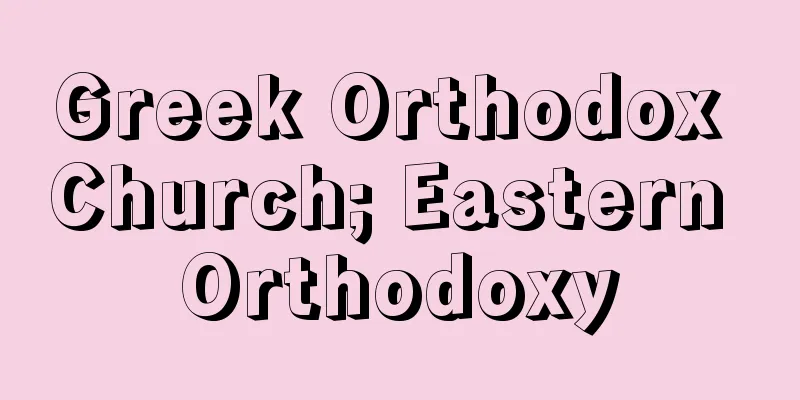Greek Orthodox Church; Eastern Orthodoxy

|
Officially, it is called the "Orthodox Catholic Church," but generally it is called the Eastern Orthodox Church, the Christian Orthodox Church, or the Greek Orthodox Church. The Greek here does not refer to an ethnic group, but rather to Greek culture, as opposed to Latin. It is therefore distinct from the Greek Orthodox Church in modern Greece. Along with the Roman Catholic Church, it is the oldest surviving church, and adheres to the beliefs and practices established at the first seven Universal Ecumenical Councils. In 1054, Christianity split into two, East and West, with Rome and Constantinople at their centers, respectively, and the East claimed the Orthodox Church. Later, through missionary work centered on Constantinople, Russia and the Balkan countries were Christianized, and with the background of the Byzantine Empire, Christian traditions with strong Hellenistic influences were transplanted. Today, the four Patriarchates of Constantinople (Istanbul), Alexandria, Antioch, and Jerusalem exist as the honorary head of the entire Greek Orthodox Church. The Patriarch does not recognize the primacy of the Pope, and has a strong nationalistic tendency. The local churches are largely autonomous, and many autonomous churches, including the Russian Orthodox Church, have formed a federation. Source: Encyclopaedia Britannica Concise Encyclopedia About Encyclopaedia Britannica Concise Encyclopedia Information |
|
公式には「正統カトリック教会」,一般には,東方正教会,ハリストス正教会,ギリシア正教会などと呼ばれる。ここでいうギリシアは,民族としての名称ではなく,ラテンに対してギリシア文化を表現する。したがって近代ギリシアにおけるギリシア正教会とは区別される。ローマ・カトリック教会とともに,現存最古の教会で,最初の7つの普遍公会議で定められた信仰と慣行を遵守する。 1054年,ローマとコンスタンチノープルをそれぞれ中心として,キリスト教は東西に2つに分れ,東方は正 (統) 教会を主張した。その後,コンスタンチノープルを中心とする宣教によって,ロシア,バルカン諸国のキリスト教化が進み,ビザンチン帝国を背景に,ヘレニズム的色彩の強いキリスト教の伝統が移植された。今日,コンスタンチノープル (イスタンブール) ,アレクサンドリア,アンチオキア,エルサレムの四総大主教区が古代以来の伝統を継いで存在し,コンスタンチノープル総大主教がギリシア正教全体の名誉上の首長となっている。ローマ教皇の首位権を認めず,民族主義的傾向が強く,各地方の教会はおおむね自治的で,ロシア正教会はじめ多くの自立教会が連合体を形成している。
出典 ブリタニカ国際大百科事典 小項目事典ブリタニカ国際大百科事典 小項目事典について 情報 |
>>: 《Greek Mythology》 - Greek Mythology
Recommend
Dyula
...Mande languages have a large number of speak...
"Righteous Blood and Chivalry"
...The mechanism is usually simple, such as placi...
Shuotsu
This hot spring resort is located in Gyeongseong ...
Musophagidae
…A general term for birds belonging to the Musoph...
Andronicus, L. (English spelling) AndronicusL
...In the following, we will look back historical...
Felis rubiginosus (English spelling) Felisrubiginosus
...A mammal of the Felidae family in the carnivor...
Jyogyodo - Jyogyodo
〘Noun〙 The hall where the Jōgyō-samai is practiced...
Izhevsk (English spelling) Ижевск/Izhevsk
The capital of the Republic of Udmurtia in wester...
Industrial television
Unlike broadcasting, which is aimed at an unspeci...
Haruki Aikawa
1909-1953 A technology historian and social activ...
Asiento - Asiento (English spelling)
In a broader sense, it refers to the exclusive co...
shelf channel
…In a broader sense, it is a general term for und...
Continuous casting
Molten steel is poured into a water-cooled copper...
Ilex pedunculosa (English spelling) Ilex pedunculosa
… [Toshio Hamatani]. … *Some of the terminology t...
Papini - Papini (English spelling) Giovanni Papini
Italian writer, critic, poet, and editor. Founder...









